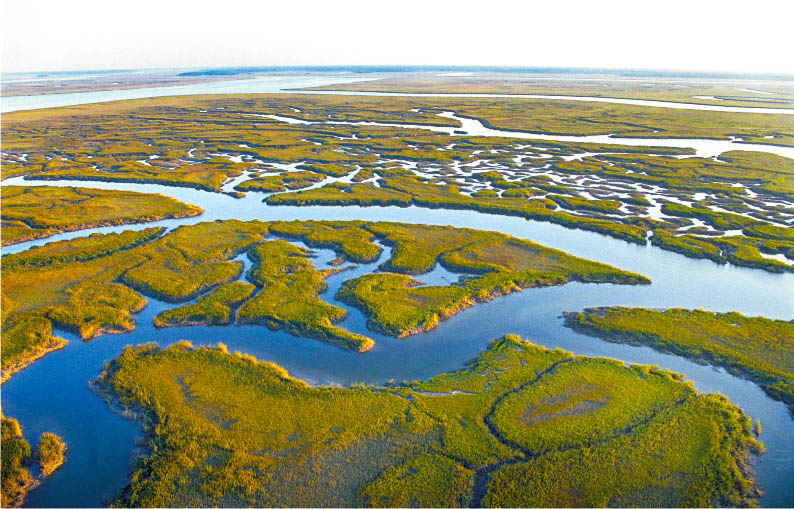World Wetlands Day
World Wetlands Day, celebrated annually on February 2nd, aims to highlight the urgent need to prioritize wetland conservation on a global scale. This year’s theme, It is Time for Wetland Restoration, looks to all generations to restore and revive degraded wetlands.
What are wetlands?
Wetlands are vital, biodiverse areas of land that are either submerged by or saturated with water. They are typically transition zones that are neither totally dry nor completely underwater, instead possessing characteristics of both. Wetlands exist in a variety of climates on every continent but Antarctica. Across the globe, these ecosystems vary in their soils, topography, climate, hydrology, biome, and size. The two primary wetland categories are coastal or tidal wetlands, and inland or nontidal wetlands. These categories can differ depending on the water inlet and composition (freshwater vs salt). Regardless of where they are located, all wetlands support a variety of aquatic and terrestrial species making them quintessential aspects of a viable habitat.
Why do they need saving?
Even though they are among the world’s most valuable ecosystems, wetlands are disappearing. According to Ramsar, the Convention of Wetlands intergovernmental treaty, “90% of the world’s wetlands have degraded since the 1700s…we are losing wetlands [at a rate] three times faster than forests.” Pollution; unsustainable use through man-made features like roads, housing developments, or intensive farming; invasive species; sediment dumping; and water drainage all contribute to the degradation of wetlands. These megatrends drive habitat losses and further contribute to the endangerment of wetland species. According to the IUCN Red List, “more than 25% of all wetlands plants and animals are at risk of extinction.” Working to preserve these ecosystems not only protects the territories but provides numerous beneficial services for vegetation, wildlife, and people.
Why are they important?
Wetlands are composed of complex dynamic relationships between a variety of species, resulting in immense benefits for the ecosystem and people alike.
Wetlands and People
Protecting wetlands can protect our safety and welfare. Wetlands act as natural sponges and purifiers, filtering sediment and absorbing pollutants from surface water. Nitrates and other chemicals often runoff from urban areas or farms into wetlands. Organisms such as plants, fungi, and algae absorb those harmful chemicals or the pollutants sink to the bottom where they are buried in sediment. The removal of these provides clean, plentiful water supplies for many communities across the globe. In California alone, wetlands provide for two-thirds of drinking water. Additionally, wetlands help blunt the force of major storms by absorbing and storing water during coastal and inland storms. This protects nearby communities by reducing the risk of flooding and damage. The binded vegetation of the wetlands releases water slowly, decreasing the risk of flooding and erosion.
Wetlands contain a host of natural products that help boost the economy. As a society, we are constantly consuming goods. According to the EPA (environmental protection agency), wetlands create livelihoods off of fishing and aquaculture, as more than “75% of the fish and shellfish that are commercially harvested are linked to wetlands.” Additionally, the raw materials we use in our daily lives, like grass for livestock and timber for homes, are harvested from wetlands. Vegetation with medicinal properties creates the medicine we all rely on, highlighting a clear need for these critical ecosystems in our physical well-being.
Wetlands also provide the chance to escape into the natural world. They are beautiful places for sightseeing, hiking, fishing, photography and so much more. Wetlands provide a chance to relax and recharge in these serene surroundings and open the door for environmental education and public awareness programs that can further foster conservational action.
Wetlands and the Environment
The abundance of vegetation within wetlands releases oxygen, but perhaps even more importantly, sequesters vast amounts of carbon dioxide in their soils. These carbon sinks can sequester carbon at a rate 10 times that of tropical forests, and store 3-5 times more carbon per equivalent area. Peatlands, a type of wetland, only cover 3% of the Earth but store twice as much carbon as all world forests which cover about 30%. This highlights the urgent need to conserve and restore these valuable ecosystems.
Wetlands and Wildlife
Wetlands are teaming with life. 40% of all the world’s species call wetlands their home. On top of that, nearly 50% of all species use wetlands at some point in their lifecycle, whether for breeding, shelter, or as a food source. Furthermore, about one-third of plants and animals listed on the endangered species list in the US depend on wetlands. All of these creatures rely on wetlands for their survival; keeping wetlands healthy and prosperous powers the local food chain, and keeps wildlife viable.
What can we do to help wetland conservation?
While restoration takes time, it provides the chance for many harmful effects of degradation to be reversed. Making choices in your personal life that minimize the loss of wetlands is easy and effective. By using water sparingly, making sure to avoid using toxic products that could flow into wetlands, and adopting a diet with less environmental impact, you can make a difference. Additionally, furthering your education on these critical ecosystems and passing along that knowledge helps spread awareness. Maybe you have a little extra time, and can take a field trip to a local wetland, or join a cleanup crew to help preserve the beauty and health of the ecosystem. Anything helps, and it starts at home! No matter how you contribute to this fight for wetland conservation, make conscious choices, use persuasive voices, and act boldly.
Post Your Pledge
Take action against wetland degradation and help restore these natural ecosystems. Join the wall of pledges, or just take a few minutes to read through them. While one person may seem small, rejoice in the global community that is coming together to make a change for wetland conservation!



